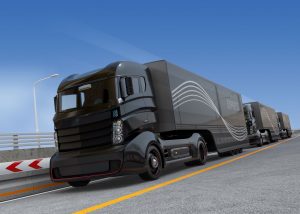 Last year, a collection of 15 states and Washington D.C. committed to transitioning to zero-emission trucks and buses via a multi-state memorandum of understanding. This year will be a critical year for the effort, as these states begin to pinpoint the suite of policies needed to foster this transition in an equitable, maximally beneficial way.
Last year, a collection of 15 states and Washington D.C. committed to transitioning to zero-emission trucks and buses via a multi-state memorandum of understanding. This year will be a critical year for the effort, as these states begin to pinpoint the suite of policies needed to foster this transition in an equitable, maximally beneficial way.
The first critical step for these states is to get the ambition right. The targets set out in the MOU are a good start, but they can and should be more aggressive.
The second is to create the market certainty that will be critical to unleashing innovation.
A new industry ecosystem craves certainty
A range of businesses is needed to build the ecosystem necessary for the successful deployment of these vehicles. Beyond product supply and demand, this transition will require new infrastructure to keep them charged and integrate them into the grid. Charging the vehicles at scale, for example, will require smart software, battery storage deployment, electric grid modernization investments and strategic and mindful installation of charging stations. We’ll need local dealers to service zero-emission trucks and buses and financial service providers to step forward with innovative financing. Currently, most of these stakeholders are not yet actively engaged in this transformation.
Market certainty critical to hitting ambitious state zero-emission truck goals Share on XLong-term, protective regulations are the keystone to unleashing innovation because they provide market certainty that drives the technological innovation and investment. We have seen this dynamic play out repeatedly in the automotive sector. Clear market standards drive manufacturer investment and spur a range of companies to bring complementary components and services to market.
The 15 MOU states have a unique and powerful way to create market certainty in their states: adoption of the Advanced Clean Truck Rule and Heavy-Duty Omnibus Regulation, developed by the California Air Resources Board. The ACT requires manufacturers of medium- and heavy-duty trucks to build more clean options and requires a certain percent of new sales in California be zero-emission vehicles. Under ACT, about 60% of all trucks and buses sold in California will be clean by 2035. The Heavy-Duty Omnibus requires groundbreaking new protections against smog-forming nitrogen oxides pollution from heavy-duty trucks.
Climate, health, and investment impact
The 60% by 2035 target in the Advanced Clean Truck Rule will have a big impact.
The ACT will reduce climate pollution in California by 17 million metric tons. By removing dirty diesel trucks from the roads, it will eliminate 60,000 tons of hazardous nitrogen oxides — the tailpipe pollutant that is a key cause of smog and respiratory disease. These avoided emissions would prevent more than 900 premature deaths, delivering at least $9 billion in public health benefits.
And the long-term market certainty will drive utilities to make investments to ready the grid for these vehicles. It will draw third-party solutions providers that can help fleets manage fleet charging or vehicle financing. Manufacturers and their dealers will prepare to sell and service these vehicles. In short, the ACT will jump start the development of the broader support structure needed for these vehicles.
The Heavy-Duty Omnibus Regulation would require remaining diesel trucks to significantly reduce health-harming pollution. In California alone, this program would prevent nearly 3,900 deaths while providing over $36 billion in health benefits.
Adoption of the ACT and the Heavy-Duty Omnibus Regulation beyond California will send an important message to Washington too: Bold action to transition to a zero-emission heavy-duty fleet is not optional; in the absence of federal action, states are prepared to be leaders in the clean vehicle revolution.
The Biden administration should take note of this message and seek to advance ambitious federal standards — in full partnership with leading states — that deliver significant, multipollutant emission reductions.
The journey is just beginning for the multi-state initiative, and ACT and the Heavy-Duty Omnibus Regulation are not a panacea. Other policies will be needed — to ensure that zero-emission trucks and infrastructure are deployed first and foremost in communities disproportionately burdened by the health and climate change impacts associated with diesel pollution; to create near-term purchase incentives that leverage private investment and spark; and programs that drive utilities to invest in cost-effective charging infrastructure.
But when it comes to creating market certainty, few tools will be as powerful as ACT and the Heavy-Duty Omnibus Regulation.









